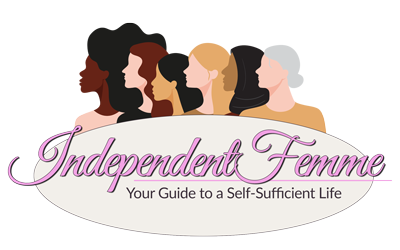Many believe that homeownership is beyond reach for low-income individuals, but that’s not the case. There are numerous alternative mortgage options designed specifically to make home buying more accessible for low-income buyers.
This blog will explore these alternatives, breaking down their requirements and benefits to help you find your path to owning a house. Read on and begin your journey towards homeownership today!
Key Takeaways
- Alternative mortgages offer accessible options for low – income individuals to achieve homeownership.
- Low – income home loans have lower interest rates, smaller down payments, and more flexible repayment terms compared to traditional mortgages.
- Programs like HomeReady, FHA loans, VA loans, USDA loans, and specialized home buying programs provide additional assistance for low-income homebuyers.
- Improving credit history, saving for a down payment, using first-time home buyer programs, and considering co-signer options can help make homeownership more affordable.
Understanding Low-Income Home Loans
Low-income home loans are specialized mortgage options designed to make homeownership more accessible for individuals with limited financial resources.
What are low income home loans?
Low income home loans open the door to homeownership for individuals and families with limited financial resources. They are distinct mortgage products offered by various lenders, including banks and government agencies, to help low-income earners acquire a house.
These loan options often feature lower interest rates, smaller down payments, and more flexible repayment terms compared to traditional mortgages. Such loans take into account that the borrower might not have a high credit score or significant savings for a large down payment.
Examples include Federal Housing Administration (FHA) loans, Veterans Affairs (VA) loans, United States Department of Agriculture (USDA) rural housing loans, and specific state-provided low-income loan programs.
Different requirements apply depending on the type of low-income home loan chosen; however, typically borrowers must meet certain income thresholds and be purchasing their primary place of residence.
Requirements and additional assistance
To qualify for low-income home loans, there are certain requirements you need to meet. While these requirements may vary depending on the specific program or lender, common factors include income limits and credit history.
Most programs have a maximum income threshold based on your household size, so it’s important to check if you fall within those limits. Additionally, lenders will assess your credit score and financial history to determine your eligibility.
If you have bad credit or limited credit history, don’t worry – there are alternative mortgage options available that can help you secure financing. Furthermore, there is additional assistance available in the form of grants and down payment assistance programs specifically designed for low-income homebuyers.
These resources can provide valuable support and reduce the financial burden of purchasing a home.
In addition to meeting the basic requirements, it’s recommended that you seek out specialized guidance and counseling services for low-income homeownership. These services can offer personalized advice tailored to your situation and help navigate any challenges along the way.
They may also provide insights into other housing programs or non-traditional mortgage options that could be beneficial for you as a low-income buyer. By exploring these opportunities and seeking professional assistance when needed, becoming a homeowner despite budget limitations is possible.
Exploring Alternative Mortgage Options
In this section, we will discuss various alternative mortgage options that are available for low-income homebuyers.
HomeReady and Home Possible mortgages
HomeReady and Home Possible mortgages are alternative financing options specifically designed to help low-income homebuyers. These programs, offered by Fannie Mae and Freddie Mac respectively, aim to make homeownership more accessible for those with limited financial resources.
With these mortgages, low down payments and flexible credit requirements are key features that can significantly ease the path to homeownership. By offering affordable housing solutions and additional assistance, HomeReady and Home Possible mortgages provide an opportunity for inspiring homeowners to achieve their dream of owning a home.
FHA loans
FHA loans are a great option for low-income homebuyers. These loans are insured by the Federal Housing Administration, which helps reduce the risk for lenders and allows them to offer more flexible terms.
With an FHA loan, you can often qualify with a lower credit score and a smaller down payment compared to traditional mortgages. This makes homeownership more attainable for those with limited resources.
Plus, FHA loans have competitive interest rates and allow sellers to contribute towards closing costs, making them even more affordable. So if you’re looking to buy a home but have a limited income, consider exploring FHA loans as a viable financing option.
VA loans
VA loans are a great option for low-income homebuyers who have served or are currently serving in the military. These government-backed loans offer benefits such as no down payment requirement and lower interest rates compared to traditional mortgages.
VA loans also have less strict credit score requirements, making them more accessible for those with limited or damaged credit. Additionally, there is no private mortgage insurance (PMI) required, which can save borrowers hundreds of dollars each month.
With these advantages, VA loans provide an excellent opportunity for inspiring homeowners to achieve their dream of owning a home without the financial burdens often associated with traditional mortgages.
USDA loans
USDA loans are a great option for low-income homebuyers looking to purchase a property in rural areas. These loans are backed by the United States Department of Agriculture and offer attractive benefits.
One major advantage is that USDA loans do not require a down payment, making them accessible to individuals with limited savings. Additionally, these loans often come with lower interest rates compared to traditional mortgages.
To qualify for a USDA loan, you must meet certain income limits and the property must be located in an eligible rural area as defined by the USDA. This type of financing can be a valuable resource for those looking to achieve their homeownership dreams in rural communities.
Specialized home buying programs
Specialized home buying programs are designed to assist low-income individuals in purchasing their own homes. These programs provide various forms of financial assistance, such as down payment and closing cost assistance, grants, and low-interest loans.
They aim to make homeownership more attainable for those with limited income or credit challenges. Government-backed loans like FHA, VA, and USDA loans are popular options under these programs.
Additionally, there are specific initiatives available for Native homebuyers that help lower barriers and expand access to financing. These specialized programs can be a great opportunity for aspiring homeowners who may not qualify for traditional mortgages.
Other home buying challenges and solutions
Low-income homebuyers may face additional challenges when purchasing a house. However, there are solutions available to help overcome these hurdles. For example, some buyers struggle with limited credit history or damaged credit.
In such cases, alternative lenders may offer unique loan terms and benefits that traditional banks do not provide. Additionally, there are various homebuyer assistance programs available to help with down payments and closing costs.
By exploring these options and seeking guidance from mortgage counseling services, low-income individuals can find ways to make their homeownership dreams a reality.
Tips for Buying a House with Low Income
Improve your credit history, save for a down payment, utilize first-time home buyer programs, and consider co-signer options.
Improving credit history
Improving your credit history is an essential step in buying a house with low income. A better credit score not only increases your chances of getting approved for a mortgage but also helps you secure more favorable interest rates.
To improve your credit, start by paying all your bills on time and reducing any outstanding debts. It’s also important to check your credit report for errors and dispute any inaccuracies promptly.
Additionally, avoid applying for new credit or taking on too much debt while you’re in the process of buying a home. By taking steps to improve your credit history, you’ll be one step closer to achieving your goal of homeownership.
Saving for a down payment
Saving for a down payment is an important step in the home buying process. It can seem daunting, but there are strategies to make it more manageable. One option is to set a budget and create a savings plan to help you reach your goal.
Another option is to explore down payment assistance programs that may be available in your area. These programs can provide grants or low-interest loans to help you with the upfront costs of purchasing a home.
Additionally, consider cutting back on expenses and finding ways to increase your income, even if it’s just temporarily, to boost your savings faster. With determination and careful planning, saving for a down payment is achievable for low-income homebuyers.
Budgeting and using first-time home buyer programs
Budgeting and using first-time home buyer programs are essential steps in making homeownership more affordable for low-income individuals. By carefully managing your finances and taking advantage of these programs, you can lower your upfront costs and monthly payments.
Many first-time home buyer programs offer down payment assistance, closing cost grants, or even reduced interest rates. It’s important to do thorough research on the available options and requirements for each program to find the best fit for your needs.
With careful budgeting and utilizing these programs, you can turn your dream of owning a home into a reality.
Co-signer options
If you have low income and struggle to qualify for a mortgage on your own, one option to consider is finding a co-signer. A co-signer is someone with good credit who agrees to take responsibility for the loan if you are unable to make payments.
This can help lenders feel more confident in approving your application because they have another person backing up the loan. However, it’s important to remember that being a co-signer comes with risks, as they will be equally responsible for repaying the loan if you default.
So make sure both parties fully understand and are comfortable with this arrangement before proceeding.
Having a co-signer can greatly improve your chances of getting approved for a mortgage, especially if you have bad credit or little income. It shows lenders that there is another person willing to vouch for your ability to repay the loan.
Pros and Cons of Non-Traditional Mortgages
Non-traditional mortgages offer alternative options for low-income homebuyers, but it’s important to weigh the potential risks and benefits before making a decision.
Types of mortgages
There are various types of mortgages available that can help low-income homebuyers achieve their dream of homeownership. Some options include conventional mortgages, FHA loans, VA loans, and USDA loans.
Conventional mortgages are offered by traditional lenders and usually require a higher credit score and down payment. FHA loans are backed by the Federal Housing Administration and have lower credit score requirements and smaller down payment options.
VA loans are specifically for veterans and active-duty military personnel, offering them favorable terms with no down payment required. Finally, USDA loans are designed for rural areas and provide low-income buyers with affordable financing options.
The closing process
During the closing process, all the necessary paperwork is finalized and signed. This includes preparing and reviewing legal documents, such as the loan agreement and title deed. The buyer will also need to provide proof of insurance coverage for their new home.
Additionally, a final walkthrough of the property may be conducted to ensure that everything is in order before ownership is officially transferred. It’s important for buyers to understand this process and ask any questions they may have to ensure a smooth transition into homeownership.
Potential risks and benefits
Alternative mortgages offer potential risks and benefits for low-income homebuyers. One of the main benefits is that these mortgages often come with lower monthly payments compared to traditional loans.
This can make homeownership more affordable, especially for individuals with limited income. Additionally, alternative lenders may have less strict requirements for qualification, which can be advantageous for those who have damaged or limited credit history.
However, it’s important to consider the potential risks associated with alternative mortgages. For example, some non-traditional loans may have higher interest rates than traditional mortgages, which can increase the overall costs over time.
It’s also crucial to carefully review the terms and conditions of any alternative mortgage option and understand all fees involved in order to avoid any unexpected surprises during the closing process.
Conclusion
In conclusion, exploring alternative mortgage options is crucial for low-income homebuyers looking to achieve their dream of homeownership. With various programs and loans available, such as HomeReady, FHA, VA, USDA loans, and specialized home buying programs, there are viable solutions to overcome the challenges of limited income and credit history.
By taking advantage of these opportunities and seeking assistance from grants and first-time homebuyer programs, low-income individuals can find affordable housing options that fit their needs.
Don’t let financial constraints deter you from owning a home – explore your options today!
FAQs
1. What are alternative mortgages for low-income homebuyers?
Alternative mortgages for low-income homebuyers include non-traditional options like government-backed loans, no-down payment mortgages and interest-only loans.
2. How can first-time buyers benefit from these programs?
First-time home buyer loans and programs provide affordable housing opportunities to those with low income by offering low or no down-payment options along with possible grants.
3. Are there specific mortgage options available for Native Americans?
Yes, there are unique native homebuyer mortgage options aimed at providing affordable homeownership opportunities to Native American individuals or families with a lower income scale.
4. Can someone with bad credit qualify for these programs?
Even if you’re buying a house with low income and bad credit, many of these programs offer assistance such as subprime mortgage alternatives to help secure financing options feasibly.
5. Does the government provide any assistance to low-income individuals interested in buying homes?
Government assistance is indeed available via various programs including government-backed loans and housing assistance initiatives specifically tailored towards helping out potential homeowners amongst thelower-income groups.
6. Are there alternatives if I’m not ready for a traditional mortgage just yet?
There sure are! Options like rent-to-own agreements serve as great stepping stones before fully committing to traditional mortgages; making homeownership more accessible even when initial finances seem stretched thin.
Source URLs
https://www.amres.com/amres-resources/exploring-alternative-mortgage-options
https://www.gao.gov/products/gao-22-104380
https://myhome.freddiemac.com/blog/homebuying/exploring-mortgage-options-for-native-homebuyers
https://www.rocketmortgage.com/learn/nontraditional-mortgage
https://themortgagereports.com/24603/how-to-buy-a-house-with-low-income-in-2017








